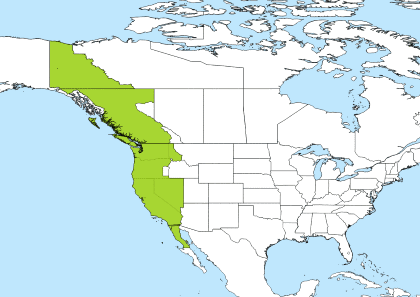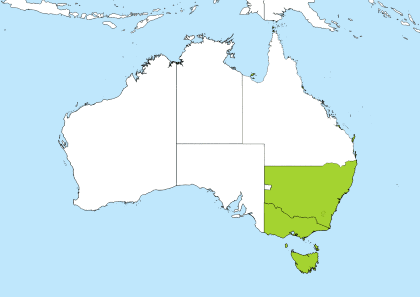PST to AEDT Converter
Time Difference
Pacific Standard Time is 19 hours behind Australian Eastern Daylight Time
7:30 pm19:30 in PST is 2:30 pm14:30 in AEDT
PST to AEDT call time
Best time for a conference call or a meeting is between 3:30am-5:30am in PST which corresponds to 10:30pm-12:30pm in AEDT
7:30 pm19:30 Pacific Standard Time (PST). Offset UTC -8:00 hours
2:30 pm14:30 Australian Eastern Daylight Time (AEDT). Offset UTC +11:00 hours
7:30 pm19:30 PST / 2:30 pm14:30 AEDT
| PST | AEDT |
|---|---|
| 12am (midnight) | 7pm |
| 1am | 8pm |
| 2am | 9pm |
| 3am | 10pm |
| 4am | 11pm |
| 5am | 12am (midnight) |
| 6am | 1am |
| 7am | 2am |
| 8am | 3am |
| 9am | 4am |
| 10am | 5am |
| 11am | 6am |
| 12pm (noon) | 7am |
| 1pm | 8am |
| 2pm | 9am |
| 3pm | 10am |
| 4pm | 11am |
| 5pm | 12pm (noon) |
| 6pm | 1pm |
| 7pm | 2pm |
| 8pm | 3pm |
| 9pm | 4pm |
| 10pm | 5pm |
| 11pm | 6pm |
| 0:00 | 19:00 |
| 1:00 | 20:00 |
| 2:00 | 21:00 |
| 3:00 | 22:00 |
| 4:00 | 23:00 |
| 5:00 | 0:00 |
| 6:00 | 1:00 |
| 7:00 | 2:00 |
| 8:00 | 3:00 |
| 9:00 | 4:00 |
| 10:00 | 5:00 |
| 11:00 | 6:00 |
| 12:00 | 7:00 |
| 13:00 | 8:00 |
| 14:00 | 9:00 |
| 15:00 | 10:00 |
| 16:00 | 11:00 |
| 17:00 | 12:00 |
| 18:00 | 13:00 |
| 19:00 | 14:00 |
| 20:00 | 15:00 |
| 21:00 | 16:00 |
| 22:00 | 17:00 |
| 23:00 | 18:00 |
Pacific Standard Time
Offset: PST is 8 hours behind Greenwich Mean Time (GMT) and is used in North America
Countries: It is used in following countries: Canada, Mexico, United States
Principal Cities: The largest city in the PST timezone is Los Angeles from USA with population about 3.793 million people. Other major cities in the area are Vancouver, Tijuana, San Diego, San Jose
French: HNP - Heure Normale du Pacifique
Spanish: PT - Tiempo del Pacífico, PT - Zona Noroeste

Daylight Saving: This is a standard timezone, however during summer some places switch clocks for one hour forward when daylight saving comes into effect and observe Pacific Daylight Time (PDT).
 Start: Pacific Standard Time (PST) started on Sunday, November 2, 2025 at 2:00 am local time and clocks were set one hour back to Sunday, November 2, 2025, 1:00 am. Standard time starts annually the on first Sunday of November.
Start: Pacific Standard Time (PST) started on Sunday, November 2, 2025 at 2:00 am local time and clocks were set one hour back to Sunday, November 2, 2025, 1:00 am. Standard time starts annually the on first Sunday of November.
 End: Pacific Standard Time (PST) ends on Sunday, March 8, 2026 at 2:00 am local time and clocks are set one hour forward to Sunday, March 8, 2026, 3:00 am local daylight time instead. Standard time starts annually the on second Sunday of March.
End: Pacific Standard Time (PST) ends on Sunday, March 8, 2026 at 2:00 am local time and clocks are set one hour forward to Sunday, March 8, 2026, 3:00 am local daylight time instead. Standard time starts annually the on second Sunday of March.
PST representations, usage and related time zones
- -08 - basic short
- -0800 - basic
- -08:00 - extended
- -0800 - sign character (-) followed by a four digit time providing hours (08) and minutes (00) of the offset. Indicates eight hour and zero minutes time differences to the west of the zero meridian.
- Uniform - Military abbreviation for PST
- U - short form of 'Uniform'
- America/Ensenada
- America/Los_Angeles
- America/Santa_Isabel
- America/Tijuana
- America/Vancouver
- Canada/Pacific
- Mexico/BajaNorte
- PST8PDT
- US/Pacific
- Pacific Standard Time - UTC -8
- Pitcairn Standard Time - UTC -8
- Paraguay Standard Time - UTC -3
- AKDT - Alaska Daylight Time
- PST - Pacific Standard Time
- PT - Pacific Time
- PST - Pitcairn Standard Time
- U - Uniform Time Zone
Australian Eastern Daylight Time
Offset: AEDT is 11 hours ahead Greenwich Mean Time (GMT) and is used in Australia
Countries: It is used in following countries: Australia
Principal Cities: The largest city in the AEDT timezone is Sydney from Australia with population about 4.627 million people. Other major cities in the area are Melbourne, Canberra, Newcastle, Wollongong

Daylight Saving: Australian Eastern Daylight Time (AEDT) is a daylight saving/summer timezone, however during winter some places switch clocks for one hour back and observe Australian Eastern Standard Time (AEST).
 Start: Australian Eastern Daylight Time (AEDT) started on Sunday, October 5, 2025 at 2:00 am local time and clocks were set one hour forward to Sunday, October 5, 2025, 3:00 am. Daylight saving starts annually the on first Sunday of October
Start: Australian Eastern Daylight Time (AEDT) started on Sunday, October 5, 2025 at 2:00 am local time and clocks were set one hour forward to Sunday, October 5, 2025, 3:00 am. Daylight saving starts annually the on first Sunday of October
 End: Australian Eastern Daylight Time (AEDT) ends on Sunday, April 5, 2026 at 3:00 am local time and clocks are set one hour back to Sunday, April 5, 2026, 2:00 am local standard time instead. Daylight saving ends annually the on first Sunday of April
End: Australian Eastern Daylight Time (AEDT) ends on Sunday, April 5, 2026 at 3:00 am local time and clocks are set one hour back to Sunday, April 5, 2026, 2:00 am local standard time instead. Daylight saving ends annually the on first Sunday of April
Australian Eastern Daylight Time (AEDT) is observer in New South Wales (except Broken Hill and Lord Howe Island), Victoria, Tasmania, Australian Capital Territory, Sydney, Melbourne, Hobart, Canberra AEDT is equal to Coordinated Universal Time plus 11 hours (UTC +11). During a summer time period, these locations move from AEST to Australian Eastern Daylight Time (AEDT), and clocks are advanced to UTC +11.
Daylight saving or summer time is commonly expressed as AEDT (Australian Eastern Daylight Time). In periods of daylight saving an hour is added to the Local Standard Time.
The regulation of time is a State Government responsibility. Changes to the period of daylight saving may be made by regulation. Legislation to harmonise daylight saving in NSW with the south-eastern states and the ACT was passed by the NSW Parliament on 23 October 2007.
History of daylight saving in New South Wales
Daylight saving operated nationally for single summer during World War I from 1 January 1917 to 25 March 1917 and during World War II for three summers in a row, starting on 1 January 1942.
Daylight saving was re-introduced for third time in New South Wales on 31 October 1971 after New South Wales Parliament passed the Standard Time Act 1971.
A referendum held on 1 May 1976 proposed that daylight saving should be on a permanent basis. The ballot paper stated:
"At present there is a period commonly called 'daylight saving' by which time is advanced by one hour for the period commencing on the last Sunday in October in each year and ending on the first Sunday in March in the following year.
Electors were then asked to answer YES or NO to the question: Are you in favour of daylight saving? 1,882,770 electors were in favour, 868,900 were against and 35,507 votes were informal.\"
The period of daylight saving is prescribed by the Daylight Saving Regulations 2008, made under the Daylight Saving Act 2007. Since April 2008, daylight saving has been synchronised across Tasmania, New South Wales, Victoria, the ACT and South Australia, although South Australia remains half an hour behind throughout the year due to the observance of Australian Central Standard Time.
Which is correct Daylight Savings or Daylight Saving (with or without the 's' at the end)? The correct spelling in Australia is without the 's'.
AEDT representations, usage and related time zones
- +11 - basic short
- +1100 - basic
- +11:00 - extended
- +1100 - sign character (+) followed by a four digit time providing hours (11) and minutes (00) of the offset. Indicates eleven hour and zero minutes time differences to the east of the zero meridian.
- Lima - Military abbreviation for AEDT
- L - short form of 'Lima'
- Antarctica/Macquarie
- Australia/ACT
- Australia/Canberra
- Australia/Currie
- Australia/Hobart
- Australia/Melbourne
- Australia/NSW
- Australia/Sydney
- Australia/Tasmania
- Australia/Victoria
- AEDT - Australian Eastern Daylight Time
- BST - Bougainville Standard Time
- KOST - Kosrae Time
- L - Lima Time Zone
- LHDT - Lord Howe Daylight Time
- NCT - New Caledonia Time
- PETT - Kamchatka Time
- PONT - Pohnpei Standard Time
- SBT - Solomon IslandsTime
- VLAST - Vladivostok Summer Time
- VUT - Vanuatu Time
